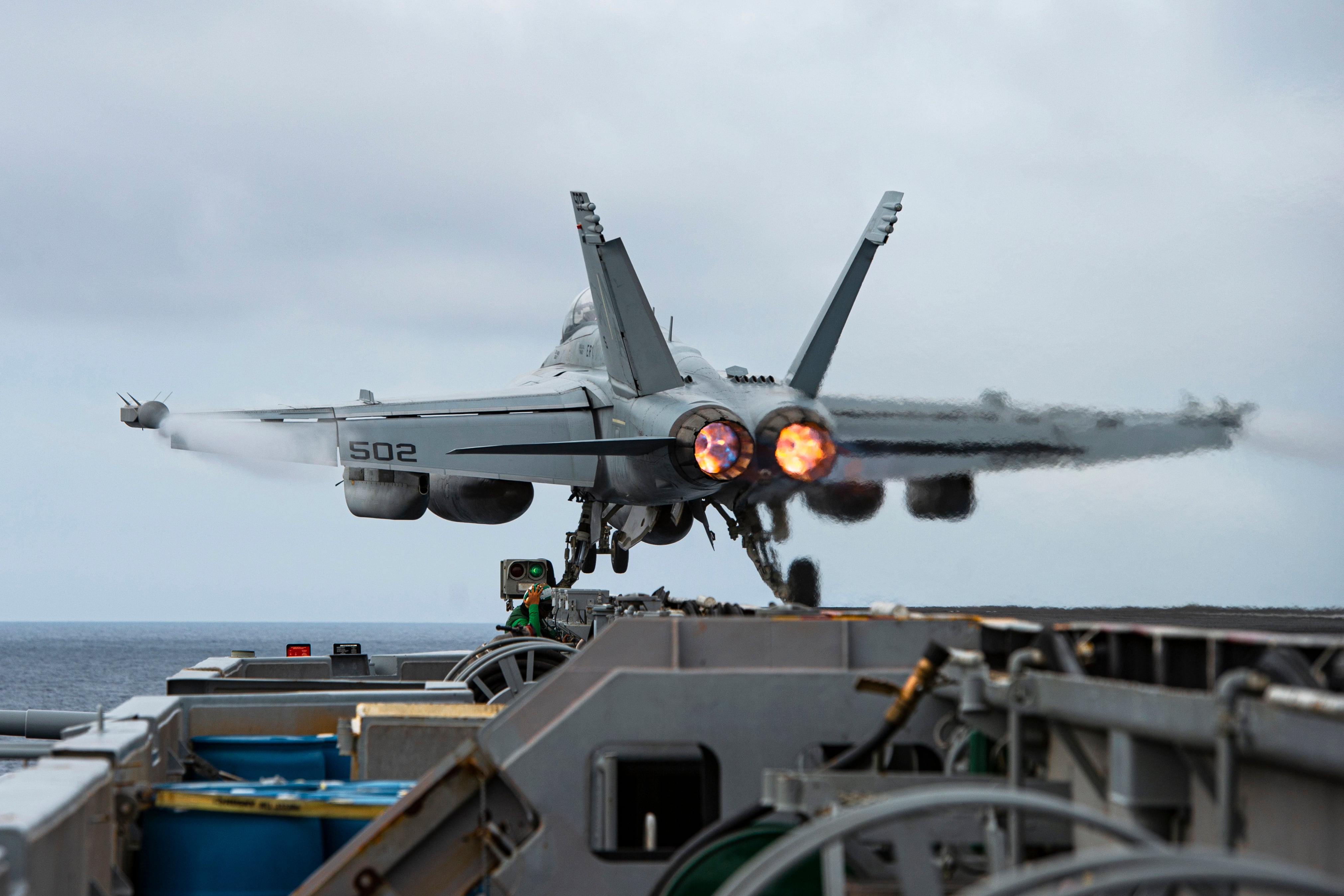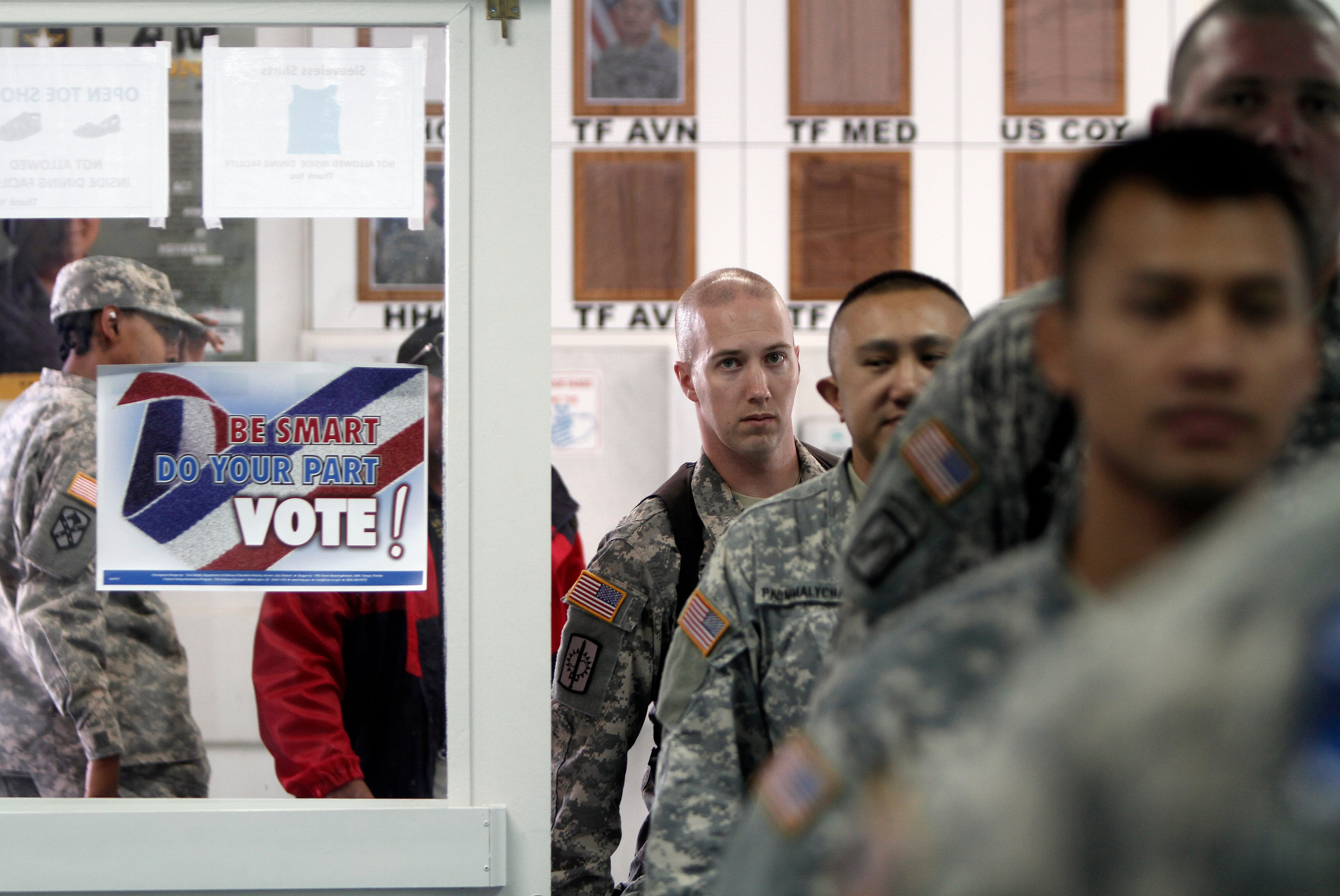Wreckage recovery operations entered a fourth day Wednesday, and the Navy is calling on the public to report debris, as Navy explosive ordnance disposal and diving teams trawl San Diego Bay for what remains of an EA-18 Growler that went down in the water Feb. 12.
The first pieces of the plane were pulled up Feb. 16, the first day of salvage ops, according to officials with U.S. Third Fleet, which has purview over naval assets and personnel in the eastern Pacific.
Officials did not immediately respond to questions about how many pieces of wreckage have been recovered to date or how many personnel were involved with the effort, but the command estimates salvage and recovery operations will take some two weeks to complete.
The Growler, assigned to Electronic Attack Squadron-135, out of Naval Air Station Whidbey Island, Washington, crashed around 10:15 a.m. local time near San Diego’s Shelter Island while attempting a landing.
RELATED

The jet’s two aircrew members were able to eject and were first picked up by the Premiere Sportfishing vessel before being taken to a local hospital, according to Navy officials. They were subsequently treated in stable condition and temporarily kept under 24-hour surveillance as a precaution.
Immediately following the crash, harbor security boats were moved into the area and a boom emplaced to contain fuel and debris. The start of salvage and recovery operations was delayed several days due to a rainy, blustery winter storm that moved through the San Diego area.
Prior to the start of recovery, the U.S. Coast Guard established a safety zone between Naval Base Point Loma and Shelter Island, limiting entry to the area only to personnel and vessels specifically authorized by Port San Diego.
“Civilian vessels will not be permitted to transit in and out of the Shelter Island basin through the southwestern portion of the channel from Feb. 15 until the conclusion of salvage operations,” Navy officials said.
Navy personnel involved in recovering wreckage include explosive ordnance disposal technicians and divers with Mobile Diving and Salvage Compage 3-8, under the Coronado-based Explosive Ordnance Disposal Mobile Unit 3, and equipment operators with Amphibious Construction Battalion One, also out of Coronado.
On Feb. 14, the salvage team anchored a barge and YD-254 100-ton floating crane to prepare for the recovery effort.
While officials have not yet confirmed what portions of the jet have already been recovered, video from local news station CBS 8 suggests the crew members’ ejection seats may have been the first objects pulled from the water.
San Diego Bay reaches depths of 21 feet in places.
The local San Diego Union-Tribune newspaper reported that the Growler, an F/A-18 Hornet variant used by the Navy for electronic warfare — thanks to the ALQ-99 underwing jamming pods it carries — had been executing a “go-around” maneuver, indicating an aborted landing, prior to crashing in the bay.
This is the second crash of a Growler within the last six months. On Oct. 15, 2024, one of the aircraft from Electronic Attack Squadron-130, also out of Whidbey Island, crashed east of Mt. Rainier during a training flight, resulting in the deaths of both aviators. That incident remains under investigation.
It’s also the second time in the last year that a Navy aircraft has gone down in San Diego Bay, necessitating a salvage and recovery effort.
On Jan. 11, 2024, an MH-60R Sea Hawk helicopter went down in the bay and was recovered three days later by Explosive Ordnance Disposal Mobile Unit 3. All six crew members were safely recovered from the aircraft. That crash also remains under investigation.
A Navy command investigation into the latest Growler crash is already underway, Navy officials said.



